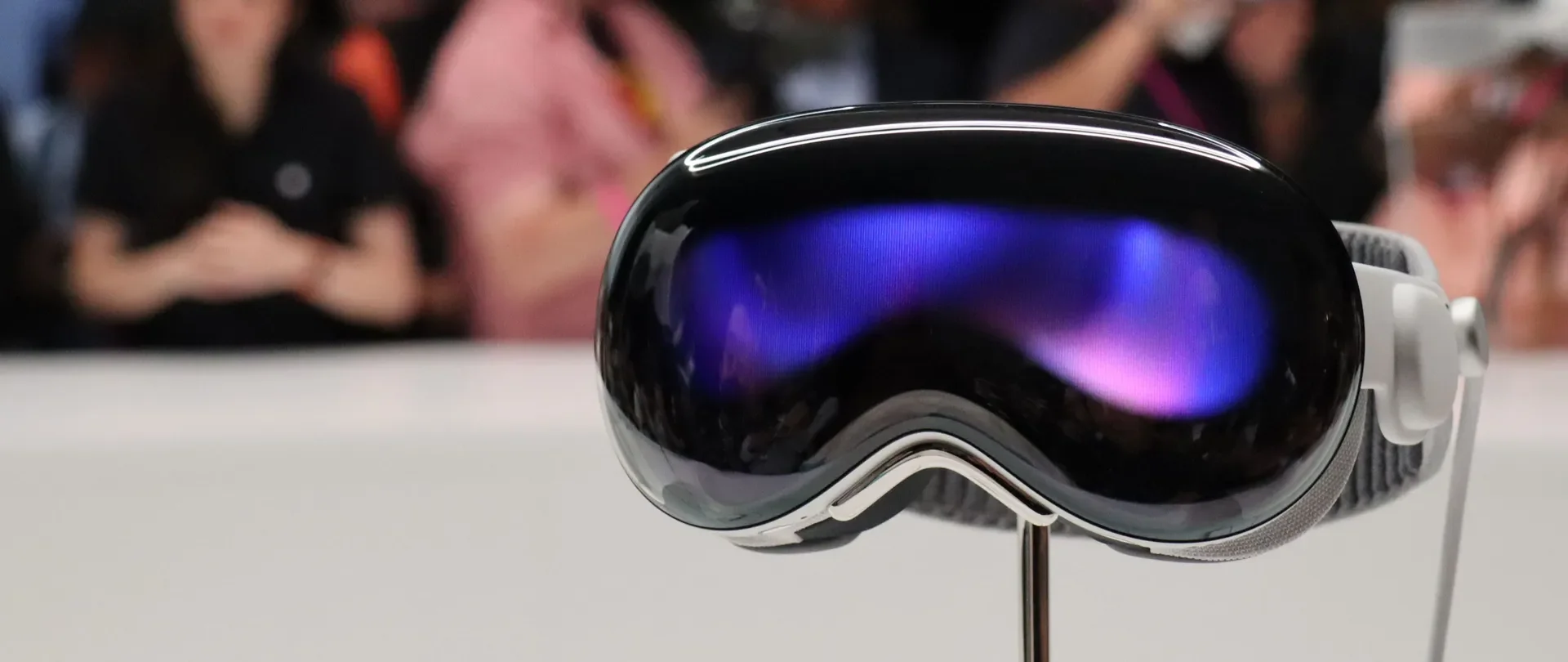Quantum-Safe Wearables: From Phones to Watches and AR Headsets
Apple’s PQ3 cryptography is built into iMessage and extends to other devices in its product ecosystem using iMessage, such as the Vision Pro.
Credit: Future / Lance Ulanoff
Apple’s PQ3 and Signal’s PQXDH preview how post-quantum security lands in mass-market devices
Consumer wearables—watches, health bands, AR/VR headsets, smart uniforms—now shuttle intimate data through cloud services, peer devices and edge gateways. If large quantum computers arrive, today’s public-key cryptography (RSA/ECC) becomes breakable, risking long-lived health records and telemetry. The good news is we’re seeing credible, at-scale precedents for post-quantum cryptography (PQC) that point the way for wearables.
In early 2024, Apple introduced PQ3 for iMessage, adding a Kyber/ML-KEM key to each device’s public-key set and rebuilding the protocol to defend against “harvest-now, decrypt-later” (HNDL) threats. This was not a lab demo; it’s live for hundreds of millions of users—evidence PQC can be productised without breaking UX. Apple’s security note explicitly ties PQ3 to NIST’s ML-KEM (Kyber) selection, signalling ecosystem alignment.
Likewise, Signal upgraded its widely studied X3DH protocol to PQXDH, a hybrid that keeps today’s authentication while adding post-quantum forward secrecy. Signal has published both the spec and a formal verification from the research community, offering reassuring transparency for risk teams evaluating PQC claims. Together, Apple and Signal show two things buyers care about: mature vendors can ship PQC at scale, and they can document it well enough for external audit.
For wearables, this translates directly into three near-term wins. First, device pairing and session setup—the handshake between a watch and phone, or a headset and base station—can move to hybrid key exchanges (PQC + classical) using IETF-documented approaches for TLS 1.3. Second, cloud sync gains HNDL resilience by adopting NIST’s finalised FIPS: ML-KEM (FIPS 203) for key establishment and ML-DSA/SPHINCS+ (FIPS 204/205) for signatures, with crypto-agility plans to rotate over time. Third, ecosystem vendors (CDN, zero-trust, tunnels) are already piloting hybrid PQC handshakes in production, easing end-to-end deployment.
Security aside, the AI × quantum story for wearables begins with trust, not speedups. Medical and industrial buyers will not deploy next-gen sensing or AI-triage features if telemetry and commands could be retrospectively decrypted. A roadmap aligned to NCSC/ETSI migration advice—inventory cryptography, prioritise long-lived data, and adopt hybrid transitions—lands better with procurement because it maps directly to due-diligence checklists. Your near-term product “win” is offering PQC-ready SDKs and pairing stacks so partners can upgrade without tearing up their apps.
Where AI and quantum touch functionality (not just security) is in cloud-assisted analytics and sensor innovation. On analytics, some research teams are testing hybrid quantum–classical models on biosignals like EEG (drowsiness/emotion classification). Results are early and often parity with classical baselines, but they indicate where QML might slot into existing MLOps: feature embedding layers within a classical net, executed as a cloud service behind a standard API. That keeps device power budgets intact while letting you experiment with QML on server-side pipelines.
On sensing, quantum magnetometry is inching toward wearable form factors. Optically pumped magnetometer (OPM-MEG) systems already deliver room-temperature, wearable brain imaging, and NV-diamond sensors keep pushing picotesla sensitivities at biologically relevant frequencies—credible signals for future cardiac/neurological wearables that produce cleaner data for AI. For now, the product implication is partnership scouting: line up trials with OPM/NV suppliers and plan data pipelines that your PQC-hardened stack can already secure.
Go-to-market, the posture that lands is pragmatic: (1) ship PQC-hardened pairing and sync first (hybrid TLS/IKE, ML-KEM key establishment); (2) expose a crypto-agile SDK so enterprise buyers can set policy; (3) pilot QML-as-a-service behind existing inference endpoints; (4) publish before/after security artefacts (key schedules, cert chains, interop tests). Anchor claims to NIST/IETF milestones, not speculative dates for fault-tolerant machines.
Bottom line: the AI × quantum intersection for wearables starts with making trust durable—and that’s now a product surface, not a white paper. Vendors who treat PQC as table stakes while quietly incubating QML and quantum sensing will look prescient when the market asks, “Are we protected—and what’s next?”
